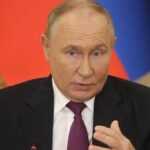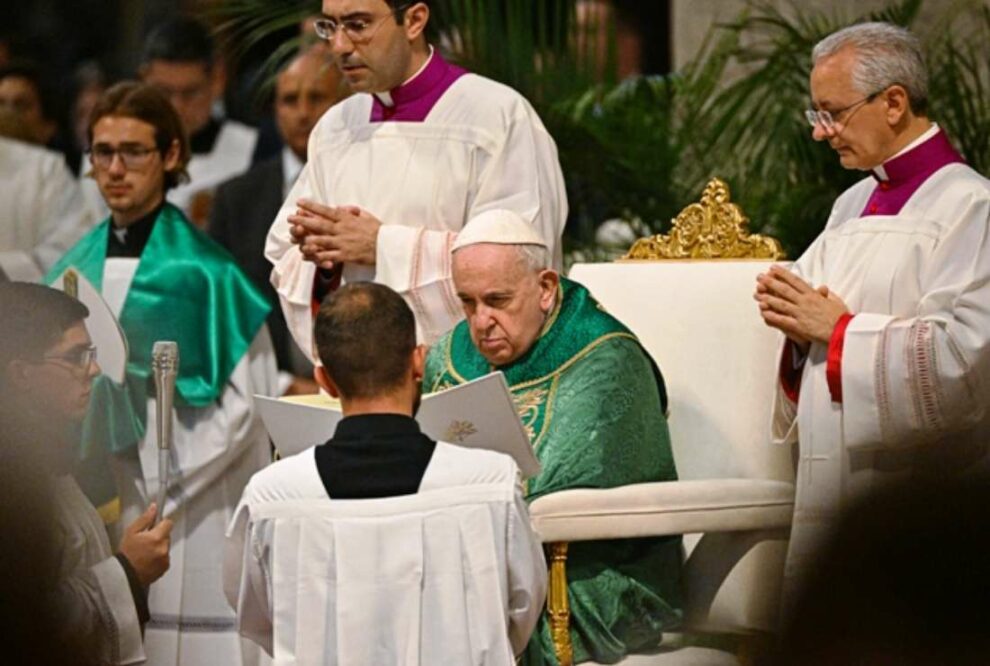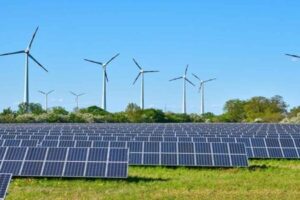What are the diplomatic priorities behind Pope Francis’ ambitious upcoming journey to the Asia-Pacific?
Pope Francis is old (he turns 88 in December) and infirm. Yet he’s forging ahead with the most ambitious international itinerary of his 11-year pontificate, visiting Indonesia, Papua New Guinea, Timor-Leste, and Singapore between September 2-13.
What compels the pontiff to complete this journey, originally scheduled for 2020 but canceled due to the coronavirus pandemic?
For one thing, he’s a man of his word. He told these countries he would visit and, especially for Catholic communities, a papal pilgrimage galvanizes the faithful, strengthening the local presence of the Church. Pope John Paul II visited each of Francis’ destinations in Asia (Papua New Guinea twice), but that was 35 to 40 years ago. Of note, Francis’s predecessor, the eurocentric Benedict XVI, made zero trips to Asia.
Francis also has strong fraternal ties to these places. As part of his commitment to inclusion, he named cardinals – known as “princes of the Church” because they select the next pope – from each of these countries. It’s the first time cardinals were ever appointed from Papua New Guinea, Timor-Leste, or Singapore. So as a religious leader, Francis is paying respects to four allies and envoys. Currently 21 Asian cardinals out of 124 are eligible to vote in the conclave that will choose Francis’ successor.
But beyond the religious imperatives, Francis is also an absolute monarch. He presides over the world’s smallest country, the Vatican City, where the Church’s governing structure, the Holy See, is based. The Holy See has diplomatic relations with 184 countries.
It’s the sovereignty of the Holy See that is recognized under international law. The Holy See enters into bilateral diplomatic relations, signs treaties with other nations, and has permanent observer status at the United Nations.
As former U.N. secretary general Dag Hammarskjold observed, “When I request an audience from the Vatican, I do not go to see the King of Vatican City but the head of the Catholic Church.”
As head of state, Pope Francis routinely meets in Rome with his counterparts. In June, for example, he sat down with Singapore’s President Tharman Shanmugaratnam, whose campaign messaging last year, “Respect For All,” was positively Franciscan.
What makes a papal excursion most fascinating is the interaction between these two roles, the diplomatic and the spiritual. Everywhere, the pontiff has diplomatic goals, linked to his priorities. So what are the priorities driving his upcoming Asia tour?
Indonesia: Catholic-Muslim Relations
Indonesia, the world’s fourth-most populous nation and its tenth-largest economy, is a non-aligned country which uses its growing international influence in a way supported by Pope Francis. For example, with regard to the Russia-Ukraine war, Jakarta has tried to keep the parties and their respective supporters talking. And like Francis, Indonesia opposes “minilateral groupings,” which the Indonesia foreign minister warned often “become part of a proxy war between major powers.” For example, AUKUS, an Australian, U.K., and U.S. security partnership, has drawn expressions of concern from both the Holy See and Jakarta.
Improving relations with the Muslim world, especially Sunni Islam, has been a priority for Francis from the start. Visiting the world’s most populous Muslim nation, Indonesia, exemplifies this goal and is welcomed by local Muslim leaders, who have been involved in the planning.
As archbishop of Buenos Aires (1998-2013), Jorge Bergoglio collaborated actively with Argentina’s Islamic Center, but as Pope Francis, he inherited rupture: Pope Benedict XVI inflamed the Muslim world in 2006 with a speech perceived as insulting the Prophet Muhammad. Five years later, the grand imam of Al-Azhar, Ahmed al-Tayeb, one of Sunni Islam’s most esteemed leaders, broke off communication with the Vatican over comments Benedict made about terrorism in Cairo.
Fast-forward eight years, and Francis and al-Tayeb were together on a futuristic stage in Abu Dhabi signing a landmark pledge of fraternity between the two world religions, expressing unity against religious extremism and the political manipulation of religion. It was the historic first papal trip to the Sunni Muslim heartland, the Arabian Peninsula, and the first public Mass there. The experience inspired Francis to write an encyclical on human solidarity prominently mentioning al-Tayeb.
This is all part of Francis’s “diplomacy of encounter,” marked by dialogue and gestures of respect, which will be on display in Indonesia. He will attend an inter-faith meeting at Jakarta’s Istiqlal Mosque, the largest mosque in Southeast Asia. In fact, it is anticipated that he will visit an underground tunnel connecting the mosque to a Catholic cathedral across the street, symbolizing healthy religious co-existence. Catholicism, one of six approved religions in Indonesia, has grown over the last 50 years with about 8.5 million faithful in 2022.
Papua New Guinea: Climate Change
As a young priest in training, Bergoglio dreamed of being a missionary. He petitioned his religious order, the Society of Jesus (Jesuits) for a post in Japan but was denied the assignment due to health problems. To this day, he urges the Church to be less institutional, or inward-looking, and more oriented to the peripheries of society – more missionary – as he outlined in “Evangelii Gaudium“ (Joy of the Gospel, 2013).
The Catholic Church in Papua New Guinea stands out as a “strong and multicultural.”
Catholicism came to Papua New Guinea with adventurers like Missionaries of the Sacred Heart, a Catholic religious order present since the 1870s. Cardinal John Ribat of Papua New Guinea is an MSC priest. Today, most people in Papua New Guinea identify as Christian, with a plurality – about 30 percent or 3.5 million – as Catholic.
Prime Minister James Marape coordinated enthusiastically on the papal visit, noting it comes just ahead of the country’s 49th independence anniversary on September 16.
Francis will travel to remote Vanimo and Baro, on the country’s northwest shore, to visit a 35-year-old Argentinian missionary and friend – despite advice that the detour wasn’t worth it.
He’ll carry an environmental message because the country is so vulnerable to climate change. It’s a local Catholic priority encouraged by the pope as unveiled in his landmark encyclical “Laudato Si” (Care for Our Common Home, 2015).
Because Francis links climate change, corporate resource exploitation, poverty, and Western indifference to the disproportionate impact of environmental ruin on developing nations, his attention to these issues is sometimes interpreted as politically left-wing. But since he roots his critique in concern for divine creation, it has a spiritual as well as diplomatic dimension.
Timor-Leste: Peace and Reconciliation
The first new independent country created in the 21st century, Timor-Leste also has the world’s highest percentage of Catholics. What’s fascinating is that the growth of the Church there is relatively recent. When Indonesia invaded East Timor, as it was then known, in 1975, only about 20 percent of residents were Catholic. Ten years later, the figure was 95 percent because “people sought refuge in the church,” according to the BBC.
The Catholic Church protected persecuted people and proved to be a reliable source regarding atrocities during the Indonesian military occupation of 1975-1999. An estimated 170,000 deaths, about 25 percent of the 1975 population, are attributed to massacres, forced disappearances, extrajudicial executions, starvation, and rape.
As a result of Pope John Paul II’s visit in 1989, implicitly, the Church planted the seeds of national self-identity without advocating for violence. Diplomatic relations between the Vatican and Timor-Leste were signed in 2015; the first cardinal was named in 2022.
Pope Francis will preach the diplomacy of peaceful reconciliation in a country that is a living testimony to this possibility.
Singapore: Multipolarity
Since its independence in 1965, Singapore has shared with Vatican City (and Monaco) the status of being an authentic city state, although Singapore has a military and the pope’s homeland doesn’t. As the only ethnic-majority Chinese state in Southeast Asia, one might expect Francis to appeal to Singapore’s population knowing Beijing is attentive. In a recent interview the pope reiterated his sincere desire to visit China, which with the Holy See does not currently have diplomatic relations.
In fact, it is Singapore’s determination to remain independent of geopolitical rivalry that the pope admires. He favors multipolarity and his preferred image of the international order is a polyhedron – sometimes he describes it as a soccer ball – in which national difference enhances unity and all cultures are allowed to thrive, without domination by any one state.
Francis believes, “Our image of globalization should not be the sphere, but the polyhedron. It expresses how unity is created while preserving the identities of the peoples, the persons, of the cultures.”
Singapore is also to be lifted up for its dedication to inter-faith dialogue too. In 1990, Parliament approved the Maintenance of Religious Harmony Bill to guard against religion being exploited to serve political interests – a signature papal priority.
After centuries of domination by foreign powers, these four countries are eager to engage and partner with an unusual player: the first pope with a perspective from the Global South.















